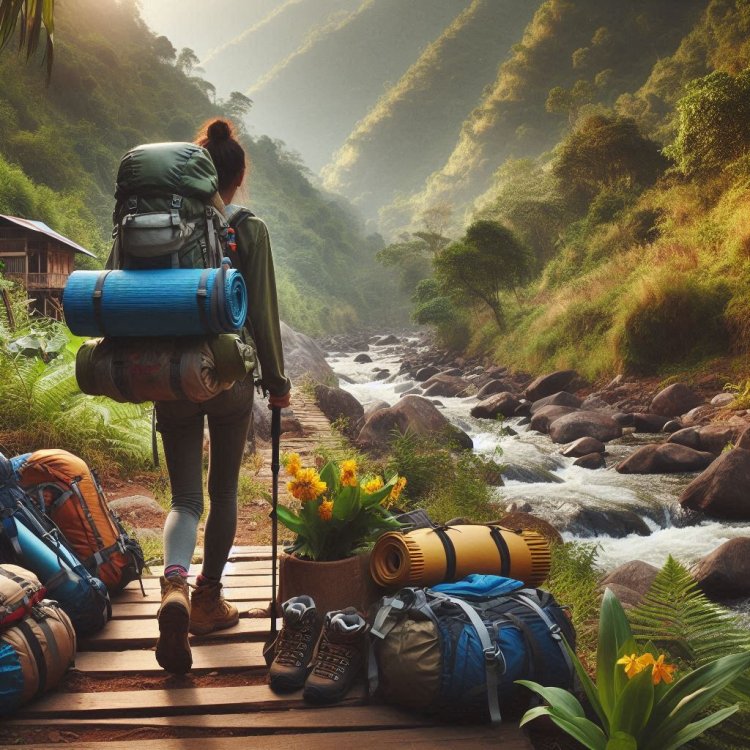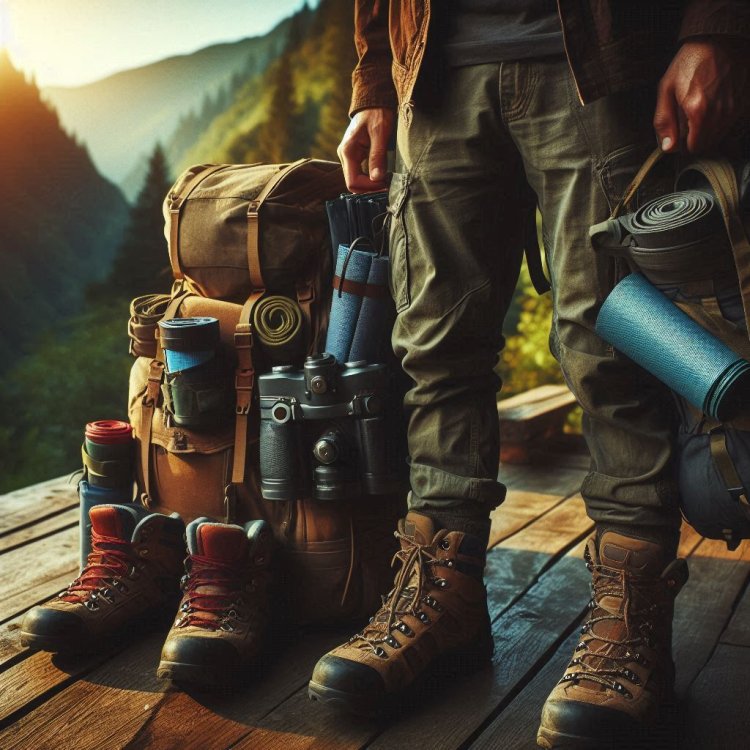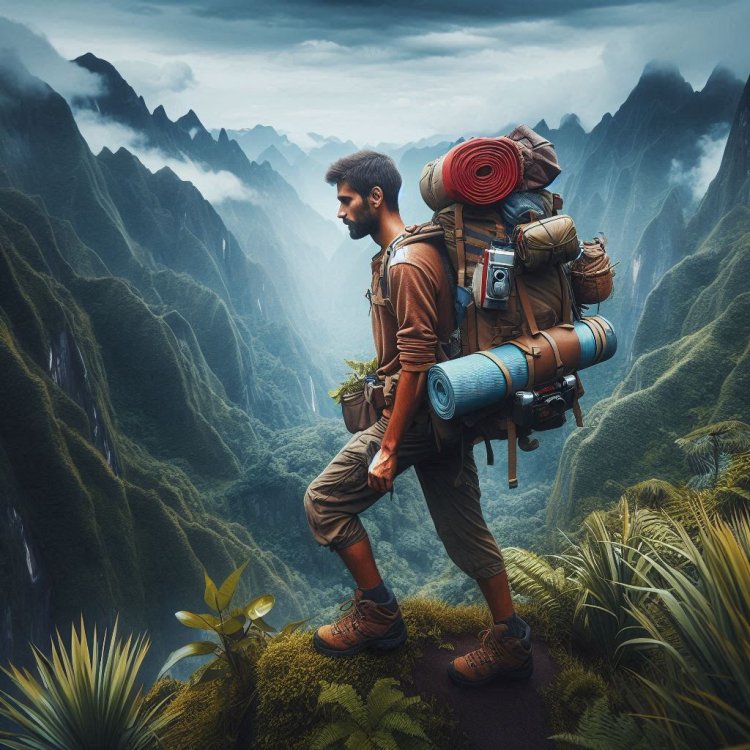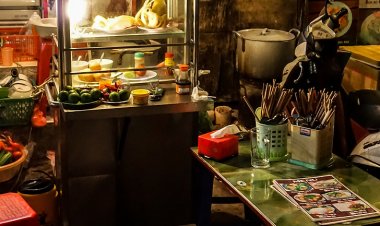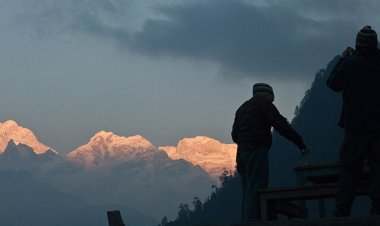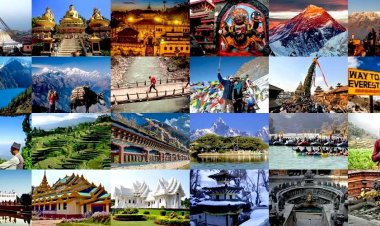How to Prepare for a Himalayan Trek: Gear, Fitness, and Packing Tips
Gear up for an unforgettable Himalayan trek. Discover expert tips on packing, fitness, and essentials for a safe and remarkable adventure.
For many travel enthusiasts, trekking in the Himalayas is a unique experience that must be exceptionally well organized. The Himalayas, with their weak summits, stunning view and calmest bucket of earth, are an ideal place for the risk takers as well as the calm seekers. However, preparing for such a venture is not easy and requires some careful considerations like physical training, planning and appropriate gear. Here’s a step by step checklist for making sure your trek is protected, pleasant and indeed remarkable.
1. Essential Gear for Himalayan Treks
The extreme climatic conditions prevalent in the Himalayas call for dependable and functional equipment. Properly packing one's bag is crucial because it guarantees comfort and protects the individual from extremes of weather and other harsh conditions.
Clothing
Layering is key to dealing with the fluctuating temperatures in the mountains.
- Base Layers: Thermal tops and bottoms are essential for retaining body heat.
- Mid Layers: A warm wool or an insulated jacket adds comfort, especially during chilly evenings.
- Outer Layers: Waterproof and windproof jackets and pants protect against rain and strong winds.
- Trekking Pants: Choose for lightweight, quick-drying pants for maximum mobility.
- Accessories: Woolen gloves, beanies, and scarves help combat the cold. Sunglasses with UV protection are a must for sunny days.
Footwear
- Trekking Boots: Invest in sturdy, waterproof boots with a good grip. Break them in before your travel to avoid burns.
- Socks: Carry moisture-absorbing and woolen socks to keep your feet dry and warm.
Backpack
Backpacks designed for mountain climbing journeys do not need to be heavy but should have enough space insulated for a few issues. 40 – 50 liters of volume is sufficient for almost every other trek. Buy backpacks which have protected straps, several pockets and a cover to protect it from rain.
Other Essentials
- Sleeping Bag: Choose a sleeping bag designed for less than zero degree temperatures.
- Trekking poles: They give stability and relieve strain on your knees.
- Headlamp: A reliable headlamp with extra batteries is crucial for early morning treks or emergencies.
- Water Bottle or Hydration Pack: Stay hydrated with a reusable bottle or a hydration system with a filter for drinking stream water.
2. Building Fitness for the Trek
The Himalayan routes, especially for novice trekkers, tend to be tough. Getting physically trained allows one to comfortably manage the journey without too much tension.
Cardio and Stamina
- Engage in aerobic exercises like jogging, cycling, or swimming at least three times a week. These activities improve lung capacity and build endurance.
- Stair climbing is another great way to prepare for uphill treks.
Strength Training
- Focus on leg exercises like squats and lunges to handle steep ascents and descents.
- Core workouts like planks and crunches will help you carry your backpack comfortably.
Acclimatization and Breathing
Altitude sickness is a significant issue for trekkers in the Himalayas.
- Practice deep breathing and yoga to improve oxygen intake.
- Spend a day or two adapting at a high-altitude base before beginning the trek.
Also Read: Langtang Valley Trek: A Blissful Adventure
3. Packing Smartly for the Adventure
It is important to note that when you go on trekking, it is very important that you lighten your load. Having a heavy bag limits your speed and makes the whole process even harder. Carry the most important items only and do not carry excess luggage.
Clothing Essentials
Carry enough clothes to layer up but avoid bringing too many items. You can re wear certain clothes or wash them during longer treks.
Snacks and Hydration
- Pack high-energy snacks like trail mix, nuts, energy bars, and dried fruits. These provide a quick boost during long hiking days.
- Always carry water and refill it or use a portable filter for stream water.
First Aid and Medications
- A basic first-aid kit is non-negotiable. Include band-aids, antiseptic cream, painkillers, and anti-inflammatory medication.
- If you’re prone to altitude sickness, carry prescribed medicines like Diamox.
Documents
- Keep your identification, trekking permits, and any other required paperwork in a waterproof pouch.
- Carry cash because ATMs may not be available in remote areas.
4. Tips for a Safe and Memorable Trek
Plan for the Weather
The weather in the Himalayas is unpredictable. Prepare for rain, snow, and strong winds, even if you’re trekking during the dry season.
Stay Hydrated
Dehydration can increase altitude sickness. Drink plenty of water, even if you don’t feel thirsty.
Trek at Your Own Pace
Don’t rush. In the Himalayas, trekking is not a competition. Walk at a pace that allows you to enjoy the surroundings and conserve energy.
Respect the Environment
The Himalayas are a natural wonder. Avoid littering, respect local cultures, and follow the “leave no trace” principle.
Why Trekking in the Himalayas is Worth It
The Himalayas are not only about mountains; they are an experience that challenges and pays you in their own multiple ways. Walking through the uneven paths, pitching tents at night, not forgetting the glory of tall peaks like Everest and Annapurna, are experiences that are unforgettable.
When you prepare suitably for your trek, it means you are ready to enjoy the sights and the tranquility of the journey rather than worrying about how to transport food or other supplies or even about discomforts.
Whether you are an experienced trekker or on your first break in the mountains, the Himalayas will definitely provide you with a never ending experience. Get ready, train well, and get ready to visit some of the most stunning peaks in this world.
Following these recommendations, you will be totally ready for the Himalayan trekking challenges. And of course, don’t forget to share your experiences with the others and motivate them to step into the Himalayan journey.
Also Read: Adventures in Nepal: Beyond Trekking
What's Your Reaction?



























































































